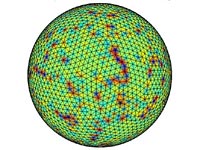|
|||||||||||||||||||||||||||||||||||||||||
| Financial Mathematics - 8161 | |||||||||||||||||||||||||||||||||||||||||

The program is intended for students who have completed a Mathematics or Statistics degree in a Science and/or Mathematics program, or a degree in a related area, and who wish to further their knowledge of mathematical finance and statistics. The program offers intensive, high-level training in principles of financial modelling and its mathematical foundations, statistical techniques, risk assessment, and computational techniques of financial mathematics. The program was introduced in 2007 in order to provide students with a route to high quality careers in the financial industry and to provide the financial sector with a stream of highly trained specialists in Quantitative Finance.
Program Objectives and Graduate Attributes The program is oriented towards graduates with a degree in an area with a significant quantitative component (such as Science,Engineering, Finance) who wish to develop their knowledge and skills in mathematical, statistical and computational methods applied to modern finance. It is an appropriate program for graduates who wish to work as quantitative financial analysts with investment banks, hedge funds, insurance companies, consulting firms, and other financial institutions. The program is ambitious and oriented towards highly motivated students with a strong quantitative background.
The program focuses on the following skills:
The program consists of ten lecture courses worth 6 UOC each, and a supervised project worth 12UOC. The project is compulsory and students are typically enrolled in their third semester of study and is subject to academic performance. Students seeking to enrol in a project are required to have the approval of the Head of School and normally will be required to have attained a WAM of 65 or higher in the first eight (8) master courses.
Students should also seek the guidance from the School at an early stage of study to ensure that the study plan being followed is best suited to lead to the project. In addition, admission to a particular project is subject to appropriate research and supervision resources being available. Students who do not attain a WAM of 65 or higher in the first eight (8) courses of their program will be awarded the Graduate Diploma in Mathematics and Statistics (5659). The total number of UOC required for the program is 72. The project will be supervised by an academic staff member of the School in an area agreed to by the student and supervisor. The project could include a literature survey and a critical analysis of the topic area; or could be a small research project. The core set of compulsory courses, listed below, is designed to give a deep knowledge of the fundamentals of financial mathematics with the special emphasis on financial modelling and pricing of financial derivatives. Students may choose the remaining courses from a list of elective graduate level courses but in any given year only a subset of these courses is offered. The courses to be offered in each year are described on the School's web site. Each candidate's proposed program of study requires the approval of the Head of the School or Nominee.
Please refer to the School of Mathematics and Statistics website.
For information regarding fees for UNSW programs, please refer to the following website: https://my.unsw.edu.au/student/fees/FeesMainPage.html
To gain entry to this program, students must have:
A formal application must be made by applying on-line.
Honours graduates in Statistics may be exempted from a maximum of one third of the courses and could complete the degree in one year of full time study. In addition, students must have permission of the Head of School or Nominee. Prospective international students should note that this program has English language requirements. Students enrolled in this program will be permitted to exit with a Graduate Diploma in Mathematics and Statistics or Graduate Certificate in Mathematics and Statistics subject to completing program requirements.
Area(s) of Specialisation |
|||||||||||||||||||||||||||||||||||||||||


